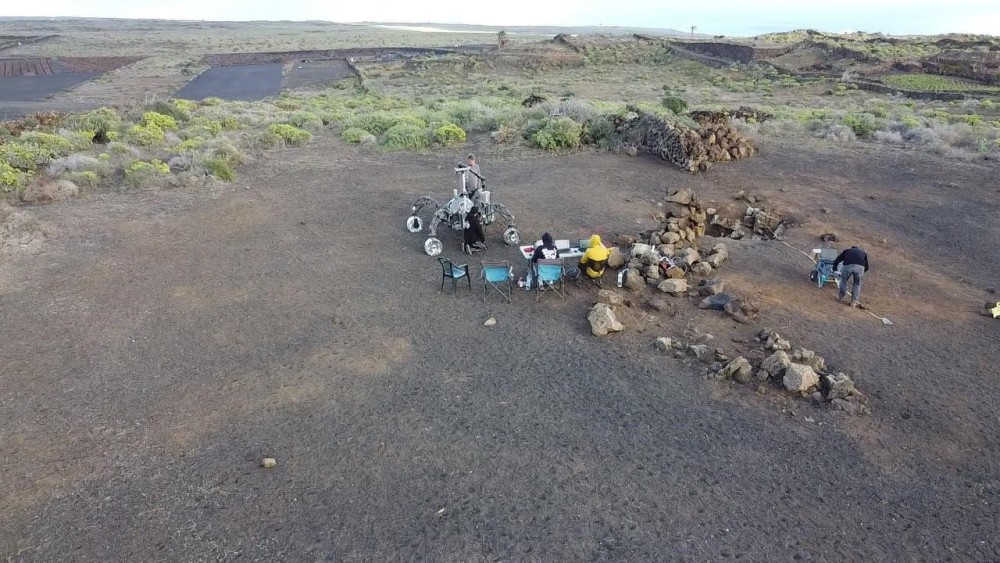Final Field Testing Completed for CoRob-X

From January 21st to February 11th, on the Spanish island of Lanzarote, GMV and its European partners conducted the final phases of field testing for the CoRob‑X project, which stands for Cooperative Robots for Extreme Environments.
CoRob-X is part of the Strategic Research Cluster (SRC) on Space Robotics Technologies, coordinated by the PERASPERA project as part of the European Union’s Horizon 2020 program. Led by DFKI, the aim of CoRob‑X has been to develop and demonstrate technologies focused on multi-agent robotics, with the aim of improving the potential for collaboration among different robots. The main application is lunar surface exploration, with a focus on areas that are difficult to reach, such as craters and lava tubes.
The testing carried out on Lanzarote was designed to demonstrate the ability of three robotics demonstrators to work in collaboration, for the purpose of exploring lava tubes. The island offered a setting on Earth with characteristics similar to those of the surface of the moon. The testing was performed using SherpaTT, which is a heavy rover weighing more than 200 kg, together with two other lightweight rovers known as Coyote and LUVMI.
During the first phase, the three rovers analyzed the ground surface surrounding a lava tube, with each assigned to a different area. The goal was to create an overall three-dimensional map, using the separate mapping produced by each of the rovers. During the second phase, the LUVMI rover approached the entrance to the lava tube and positioned a cube‑shaped device inside. This equipment contained sensors with the ability to perform a preliminary analysis of lava tube’s characteristics, while also providing communication capabilities inside of it. During the third phase, the Sherpa rover used its robotic arm to help the Coyote rover rappel down into the lava tube. This required the use of multiple systems on the two robots (perception and localization, guidance for both rovers, manipulation of the robotic arm, etc.), all of which had to take place in a particularly difficult and hazardous environment. To complete the testing, the Coyote rover explored the inside of the lava tube and performed three-dimensional mapping of it.
All phases of the mission were completed successfully, and thanks to participation by reviewers for the Program Support Activity (PSA) and from the European Research Executive Agency (REA), satisfactory execution of the testing could be officially confirmed.
These new tests supplemented other testing that GMV performed in January in the Spanish province of León, which was also focused on use of these technologies in environments with difficult access. In that case, the tests included mining activities as well as construction of underground infrastructure. Successful completion of all this testing brings the CoRob‑X project to a close, along with the key role played by GMV.
******************